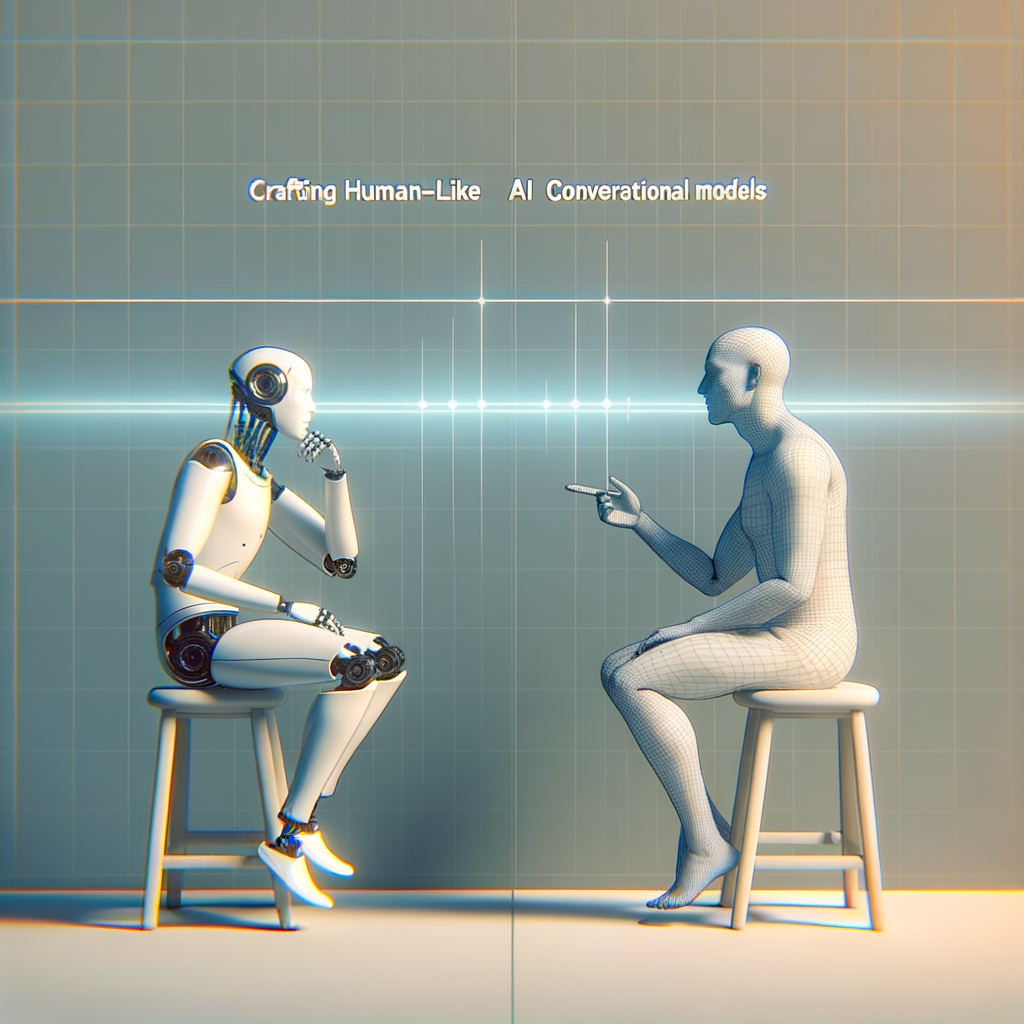
Crafting Human-Like Conversations: The Frontier of AI Conversational Models
Explore the fascinating world of AI conversational models and how they are revolutionizing human-like interactions. This blog delves into the latest algorithms, techniques, and technologies driving the most advanced AI systems in replicating human dialogues. Understand the challenges and innovations in making AI chatbots more relatable and effective in various applications.
Introduction
Artificial intelligence has made remarkable strides in the field of natural language processing (NLP), with conversational models now capable of producing human-like dialogues. These advancements are not only transforming the way we interact with machines but also how machines understand and replicate human conversation. The potential applications are vast, ranging from customer service to personal assistants and beyond.
The Foundations of AI Conversational Models
To fully appreciate the capabilities of modern AI conversational models, it's essential to understand the foundational technologies that power them. At the core are machine learning algorithms, particularly deep learning models that have been trained on extensive datasets of human conversations. These models learn language patterns, context, and the subtle nuances of human dialogues.
Key Algorithms and Techniques
-
Transformer Architecture: The introduction of the transformer model was a critical breakthrough in AI. Its architecture allows for parallelization, significantly improving the efficiency and effectiveness of language models. Transformers have enabled big models like GPT (Generative Pre-trained Transformer) to generate coherent and contextually relevant responses.
-
Recurrent Neural Networks (RNNs): While less commonly used than transformers today, RNNs were fundamental to early advancements in conversational models. They are adept at handling sequential data and are foundational to understanding conversation flow.
-
Pre-training and Fine-tuning: Pre-trained language models, such as BERT and GPT, are fine-tuned for specific conversational tasks. This two-step process allows models to generalize better and create more context-specific responses.
Challenges in Developing Human-Like AI Conversations
Despite impressive advancements, crafting truly human-like AI conversations presents several challenges:
- Understanding Context: Maintaining context over long conversations is difficult for AI. Models must remember prior interactions to provide coherent responses.
- Managing Ambiguities: Human language is fraught with ambiguities and nuances that can confuse AI models. Understanding intent and idiomatic expressions requires sophisticated semantic comprehension.
- Emotional Intelligence: Detecting and responding to emotional cues are crucial for human-like interactions, yet remain challenging for AI to master fully.
Innovations and Solutions
Researchers and developers are continually pushing the envelope to overcome these challenges:
- Contextual Embeddings: Advanced contextual embeddings help models maintain a sense of conversation history and understand relationships between dialogue segments.
- Emotion Infusion in AI: Models are being trained to recognize emotional markers and employ empathetic responses, an area showing promising results in improving interaction quality.
Applications and Future Directions
AI conversational models have a broad range of applications:
- Customer Support: Automated bots efficiently handle repetitive inquiries, reducing workload for human operators.
- Healthcare: Conversational agents can provide mental health support, deliver medical advice, and assist in patient management.
- Education: Personalized tutoring bots offer tailored educational experiences for students.
The Future of AI Conversations
The future promises even more sophisticated AI conversational models that will blur the lines between human and machine interactions. With advancements in multimodal AI, these models will be able to integrate visual and auditory data for richer interactions.
Conclusion
The quest to create human-like AI conversations is not just about advancing technology; it's about enhancing how we connect with machines. Through continuous innovation, AI conversational models will become an integral part of daily life, simplifying tasks, and facilitating seamless human-machine interaction. This transformation stands to redefine industries and create a future where human and AI collaboration is the norm.